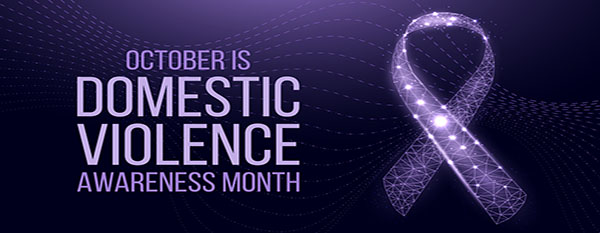Domestic Violence Awareness Month is here! In 1989, the United States Congress passed a public law that established October as Domestic Violence Awareness Month.[1] Since then, October has been a time to acknowledge domestic violence survivors and be a voice for its victims. Communities and advocacy organizations across the country try to raise awareness about the signs of abuse and the ways to stop it, as well as try to uplift survivor stories and provide additional resources to leaders and policymakers. The National Network to End Domestic Violence has named this year’s theme as #Every1KnowsSome1, which seeks to recognize how common domestic violence is and that it consists of more than physical violence.
Domestic violence is the willful intimidation, physical assault, battery, sexual assault, and/or other abusive behavior as a systematic pattern of dominance and control.[2] Domestic violence is prevalent in every community, and impacts people of all ages.[3] It includes physical violence, sexual violence, psychological violence, and emotional abuse. Domestic violence can result in physical injury, psychological trauma, and sometimes, death. The devastating consequences of domestic violence can cross generations and last a lifetime.
The U.S. Department of Justice conducted a study that found approximately 1.3 million women and 835,000 men are physically assaulted by an intimate partner annually in the United States.[4] The study also found that violence against women is primarily intimate partner violence, and that women are significantly more likely than men to be injured during an assault. Every nine seconds, a woman in the United States is beaten or assaulted by a current or ex-significant other. One in four men are victims of some form of physical violence by an intimate partner.[5]
The National Coalition Against Domestic Violence created a list of examples of abusive tendencies, which may be considered domestic violence. These behaviors include, but are not limited to:
- Telling the victim that they can never do anything right
- Showing jealousy of the victim’s family and friends and time spent away
- Accusing the victim of cheating
- Keeping or discouraging the victim from seeing friends or family members
- Embarrassing or shaming the victim with put-downs
- Controlling every penny spent in the household
- Taking the victim’s money or refusing to give them money for expenses
- Looking at or acting in ways that scare the person they are abusing
- Controlling who the victim sees, where they go, or what they do
- Dictating how the victim dresses, wears their hair, etc.
- Stalking the victim or monitoring their victim’s every move (in person or also via the internet and/or other devices such as GPS tracking or the victim’s phone)
- Preventing the victim from making their own decisions
- Telling the victim that they are a bad parent or threatening to hurt, kill, or take away their children
- Threatening to hurt or kill the victim’s friends, loved ones, or pets
- Intimidating the victim with guns, knives, or other weapons
- Pressuring the victim to have sex when they don’t want to or to do things sexually they are not comfortable with
- Forcing sex with others
- Refusing to use protection when having sex or sabotaging birth control
- Pressuring or forcing the victim to use drugs or alcohol
- Preventing the victim from working or attending school, harassing the victim at either, keeping their victim up all night so they perform badly at their job or in school
- Destroying the victim’s property[6]
There are several resources in the state as well as nationwide that support victims of domestic violence. For help, please call the hotline below.
For anonymous, confidential help available 24/7, call the National Domestic Violence Hotline at 1-800-799-7233 (SAFE) or 1-800-787-3224 (TTY) now.
[1] Rise Above Violence, October is National Domestic Violence Awareness Month, https://www.riseaboveviolence.org/october—domestic-violence-awareness-month.html#/.
[2] National Coalition Against Domestic Violence, What is Domestic Violence?, https://ncadv.org/learn-more.
[3] The National Child Traumatic Stress Network, National Domestic Violence Awareness Month, https://www.nctsn.org/resources/public-awareness/national-domestic-violence-awareness-month.
[4] U.S. Dep’t Justice, Full Report of the Prevalence, Incidence, and Consequences of Violence Against Women, Nov. 2000, chrome-extension://efaidnbmnnnibpcajpcglclefindmkaj/https://www.ojp.gov/pdffiles1/nij/183781.pdf.
[5] National Calendar, National Domestic Violence Awareness Month, https://nationaldaycalendar.com/national-domestic-violence-awareness-month-october/.
[6] National Coalition Against Domestic Violence, supra note 2.

